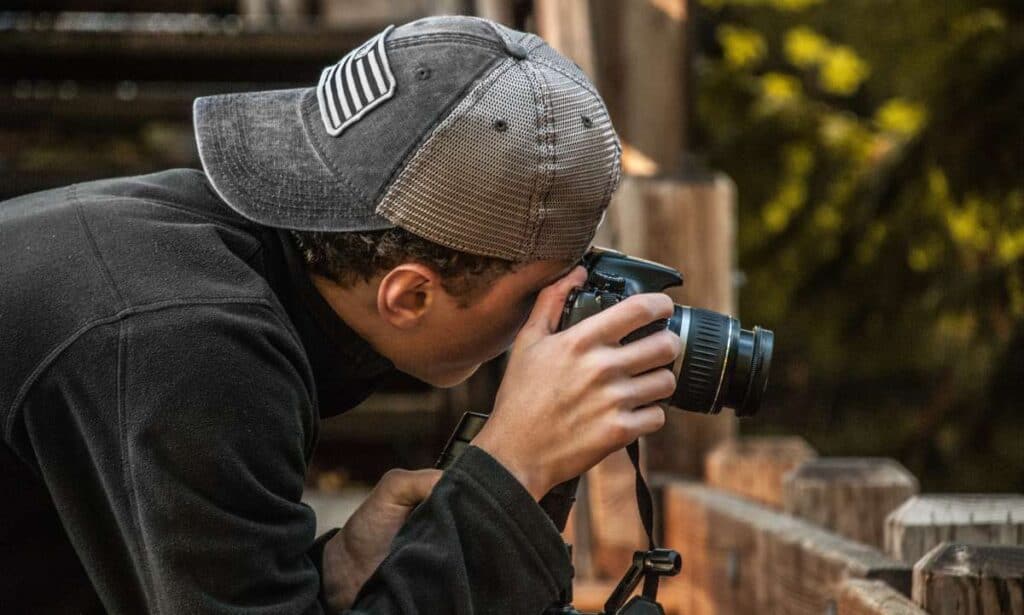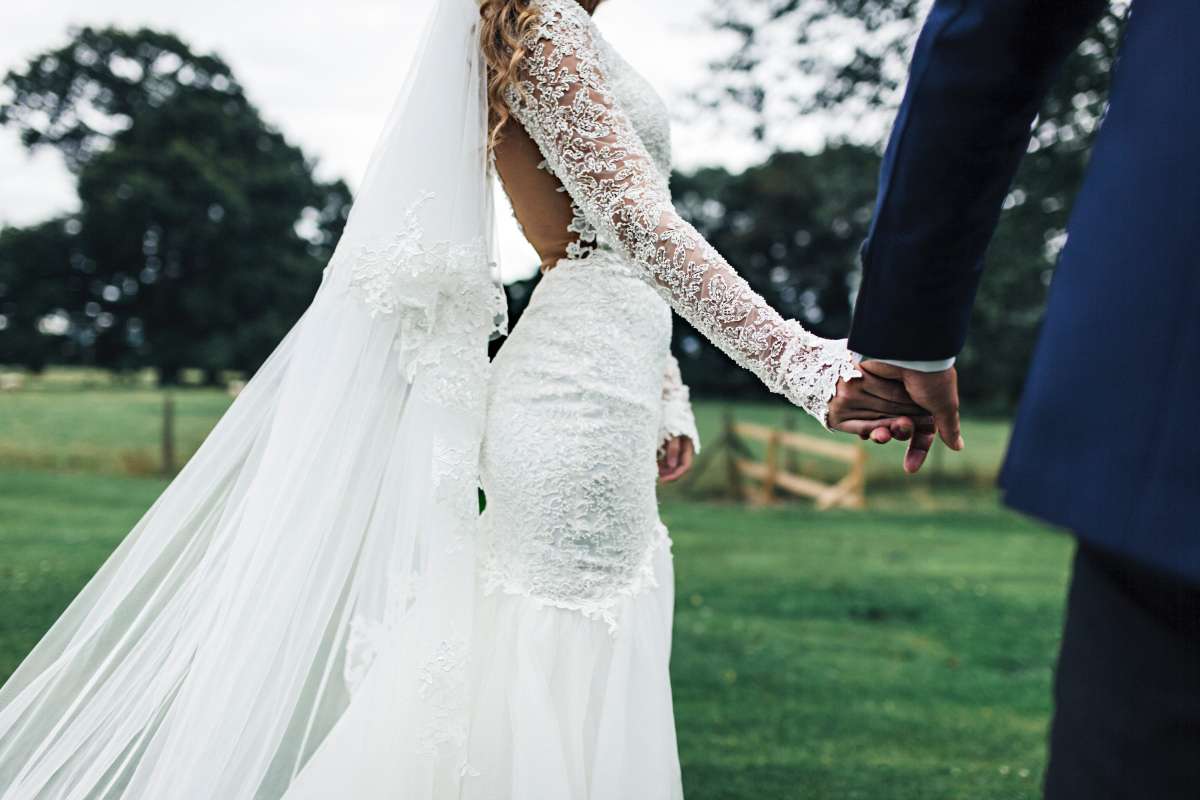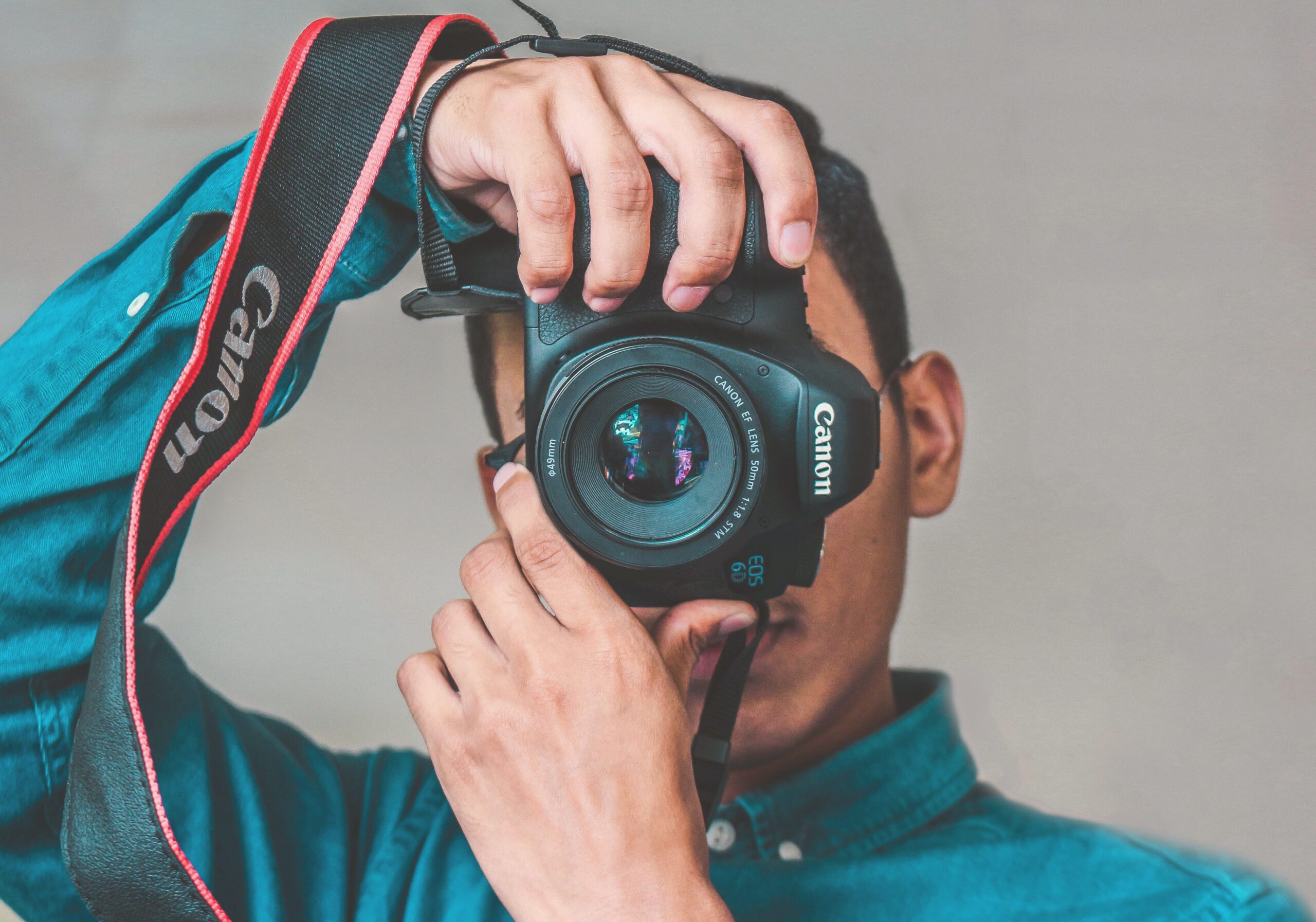To dip your toes into the waters of wedding photography, second shooting is a great option. Meeting other photographers and business owners in the area is a great way to network while you work on improving your craft. If you do well as a second photographer, lead photographers may recruit you full-time or recommend you to their colleagues. These suggestions can help you stand out in the eyes of your lead photographer and secure their continued business.
You can get a feel for what it's like to shoot a wedding as a second photographer rather than taking on the entire project on your own. Two, many professional wedding photographers place a high priority on having a photographer present to capture the day as it unfolds in its entirety. But what does it mean to be a second photographer, and what skills are necessary to excel in this role? You'll discover that photographers have varying requirements. Worse, it's downright perplexing! Need a top-notch Melbourne photographer for your big day? Here is the complete list that we have compiled for you.
Thinking about getting into the photography industry as an assistant? Do you consider yourself an experienced amateur photographer with aspirations of working as a second photographer at weddings? Take into account the suggestions of what to do and what not to do.
Table of Contents
Pre-Wedding
Pose Questions
Before the wedding day, make sure you've had a chance to talk things over with the main photographer. You should not show up on the wedding day without first knowing the basics of what is going on. Before agreeing to be the second photographer, you should ask the lead photographer the following questions.
- What equipment do you expect me to bring, and will you provide any equipment?
- Can I use the images I create for my portfolio?
- How do you want me to deliver the images?
- What is the pay rate for the day?
Be Prepared
There are some things you can do to make a good impression on your lead shooter and improve your chances of succeeding. The lead photographer should be asked in advance which parts of the wedding day they would like to be photographed, which will usually include the groom's preparations and details.
The next step is to request a sample gallery of their work to get a sense of their prefered style of photography. If you're worried about losing your printed copy of the day's schedule or guest list during the festivities, consider keeping a digital copy of each on your phone.
Be Informed
Being a defensive wall and not giving them any open shots is a great way to extend your lead. Be careful not to follow them around the dance floor during the first dance if they decide to do so. It's not uncommon for leads to ignore their second photographer because they're too wrapped up in their own love story. The best course of action is to pay attention to where the leader is aiming and stay out of the way. They will be able to identify you in photos taken together if you let them see themselves on your camera.
Wear Proper Dress
Always make sure you're wearing something that fits the occasion. If you're not usually an all-black kind of guy like some photographers are, then just pretend you're there as a guest.
Make sure nothing you're wearing could lead to a colour cast. In particular if you're shooting during the middle of the day, anything that's too shiny may reflect back onto the couple. If you're not sure what to wear, always ask your leaders for their thoughts and advice.
Throughout the Wedding
Communicate
Your lead is experiencing a lot of pressure on the big day. The burden of wondering about their backup shooter is unnecessary. Make it a point to check in frequently with your boss during the day. Send a text to your leader when you leave for the first venue of the day, when you arrive, and if/when you go on to the second venue. Don't be hesitant to get in touch with us if you have any questions.
The lead photographer must coordinate with the other photographers. If you want things to go smoothly, everyone involved needs to know what to expect. Confer with the main photographer and go through the wedding's plans. Prepare yourself for anything that might happen. If you're able to, pitch in and assist the main photographer, but don't be hesitant to try your hand at some photography on your own.
Be Professional
The head photographer should be consulted if any questions or concerns arise. Don't be shy about doing it, keep in mind that the main photographer has ultimate say over any and all decisions made on set. Subtly point out to him where you think his plan falls short.
Review Images
If you mess up a photo, you have to take it again. Photographers of the highest calibre are not immune to missing opportunities. Don't let the fact that you missed a shot deter you.
Be Unique
The lead actor or actress usually does not want you to mimic their shots. As a team member, you're expected to support the team leader and provide some variation to the client's portfolio. Be sure that you and your lead photographer are constantly on the go during the ceremony, couple pictures, and reception. If your director is focusing too closely on the couple, step back and acquire a wider view. Consider using a wider perspective rather than a straight-on shot.
Collaborate Well With the Main Photographer
Keep in mind that you are not there to promote your own company, but rather that of your lead photographer. If you're working for a different photographer at the event, you shouldn't approach the guests or their families about paying you to shoot their event. Even though you will undoubtedly get some great shots for your portfolio, remember that you are not there to replicate your leader's exact setup. Because of this, there will be an abundance of repeated shots.
Rather, you can go where your imagination takes you and do what you want! Accept the inspiration that comes your way. While the lead photographer works with the bride, the second photographer usually documents the groom's preparations. Posing formally with the groom and his attendants is also a possibility.
Looking for a wedding photographer in Melbourne? Look no further. Vines of the Yarra Valley has compiled an ultimate list of wedding photo companies to help you choose.
Post Wedding
Respect Crediting and Sharing Rules
Photographers have varying expectations for how their second shooters should use the photographs they take at a wedding. Make sure you check with your superiors before uploading any of these photos online. Nothing could be more humiliating than if the bride saw a sneak look from the wedding day taken by the second shooter.
Have Fun
The day of the wedding can be a long and tiring one. In short, your role as second photographer is to back up the primary photographer and record the day's joy for the couple and their loved ones. Having a second, upbeat photographer around can relieve some of the lead's burden and ensure that everyone in the photos has a good time.
There is nothing but happiness and love on a wedding day. Do not waste this once-in-a-lifetime opportunity to celebrate the beginning of a new chapter in a couple's life together.
Wedding Second-Photographer Tips
Observe the Main Photographer
Pay close attention to the main photographer, the bride, and the groom. Investigate and try to understand his method. Ask him questions about the aperture, shutter speed, focal length, and composition he used with his lens. Is there a specific reason for the direction of fire? I don't understand why he's standing there.
The success of the job depends on more than just a single shot. A wedding photographer's job is to help their clients relax and enjoy themselves by managing their expectations and interacting with them. Take note of the lead photographer's interactions with clients and how he interacts with subjects for photographs.
Create a Portfolio
You can build your portfolio and experience as a photographer without the same amount of stress as the main shooter. Talk to the head photographer to understand what is expected from you.
There will probably be times where you can take pictures of particular things and times when you can take pictures of whatever you want. You can have the same results as the main photographer without having to follow them around. Take this opportunity to better yourself.
Be Ready
Wedding photographers should be flexible and able to think on their feet. In an instant, you can go from the bright outdoors to the shadowy interior of a church for a solemn ceremony and then to a dance party. Any given situation calls for you and make a necessary adjustments.
It's a good idea to practise developing automatic reflexes before the wedding. Professional photographers have the ability to quickly and easily adjust their cameras' settings. Think about what you're doing while keeping your attention on the road ahead, just like you would in an automatic car.
Avoid Common Errors
Avoid showing up in casual clothes; instead, think about the location and occasion when deciding what to wear. Take your time. Don't pretend to have everything figured out and hold back until it's the perfect time to strike. During the day, make sure your camera is in sync with the main photographer's so that everyone's shots can be easily sorted later.
Don't interrupt the lead photographer too much with questions or requests to be in his photos. Avoid standing beside main photographer's toes begging for instructions. However, feel free to ask questions if it is your first time. Avoid getting in the way of the main photographer. Find out where he'll be and follow his lead on where to stand.
Make sure all the equipment needed are clean and bring cleaning supplies for them before the wedding. Be sure to charge your battery and have a spare battery and charger handy. Keep a spare battery on hand in case the one you're using dies. Learn all you can about your camera. You aren't giving your client their money's worth if you show up to the shoot with no idea how to use the camera. You should be prompt in taking care of your tools, as that is one of the reasons for your salary.
At Vines of the Yarra Valley we have compiled a list of the Best Photographers in Melbourne to help you choose who captures your magical day.
FAQs About Wedding Photographer
The second photographer can get different angles that the main photographer can't. This is a great reason and is super important for you to talk to your wedding photographer about. You might need a second photographer for those angles based on how a wedding photographer works.
Great wedding photographers have a unique style and method to deliver amazing stills. They also use the best technology to bring unique experiences. It takes a brave and confident photographer to cross boundaries and explore the world of tech in photography.
One of the primary reasons why wedding photography is so expensive is the initial investment photographers make. The investment photographers usually make on their gears is a massive amount of money. The camera, lenses, lights and other additional accessories cost a lot.
Viewing an entire gallery or two of real weddings a photographer has shot will allow you to see a more comprehensive range, from family portraits to reception detail shots. “Look for honesty, truth, and emotional connection in a photographer's work.
STAND AT THE AISLE END
As the bridal party and bride walk down the aisle, take the opportunity to capture this moment from various angles. While your second shooter captures them exiting the limo or building, you can be at the front of the aisle as they walk toward you.
Conclusion
How can you become a second photographer at a wedding? Photographers in Melbourne share their best advice for winning over the industry's top dog. By preventing them from getting any clear shots off, you can keep your lead from shrinking. Be sure that you aren't wearing anything that could cause a colour shift. Help out the main photographer however you can, and don't be afraid to take some shots on your own if you're feeling confident enough.
You'll have to start over if you ruin a photo. In case of confusion, the chief photographer should be contacted. Members of a team are counted on to back up the team captain while also adding variety to the client company's portfolio. Photographers that specialise in weddings need to be adaptable and quick on their feet. One of a wedding photographer's duties is to ensure that the couple feels comfortable and has a good time.
Having a second photographer around may make sure that the main one can relax and focus on making sure that everyone looks excellent in the pictures. If the lead photographer is busy, don't bother him with questions or requests to be in shots. It will be much easier to organise everyone's photographs if all of the cameras are synchronised with the chief photographer's.
Content Summary
- To dip your toes into the waters of wedding photography, second shooting is a great option.
- You can get a feel for what it's like to shoot a wedding as a second photographer rather than taking on the entire project on your own.
- But what does it mean to be a second photographer, and what skills are necessary to excel in this role?
- Need a top-notch Melbourne photographer for your big day?
- Do you consider yourself an experienced amateur photographer with aspirations of working as a second photographer at weddings?
- Take into account the suggestions of what to do and what not to do.
- Before agreeing to be the second photographer, you should ask the lead photographer the following questions.
- The next step is to request a sample gallery of their work to get a sense of their prefered style of photography.
- If you're not sure what to wear, always ask your leaders for their thoughts and advice.
- Make it a point to check in frequently with your boss during the day.
- Send a text to your leader when you leave for the first venue of the day, when you arrive, and if/when you go on to the second venue.
- The lead photographer must coordinate with the other photographers.
- Confer with the main photographer and go through the wedding's plans.
- Don't let the fact that you missed a shot deter you.
- As a team member, you're expected to support the team leader and provide some variation to the client's portfolio.
- Be sure that you and your lead photographer are constantly on the go during the ceremony, couple pictures, and reception.
- Keep in mind that you are not there to promote your own company, but rather that of your lead photographer.
- While the lead photographer works with the bride, the second photographer usually documents the groom's preparations.
- In short, your role as second photographer is to back up the primary photographer and record the day's joy for the couple and their loved ones.
- Having a second, upbeat photographer around can relieve some of the lead's burden and ensure that everyone in the photos has a good time.
- Pay close attention to the main photographer, the bride, and the groom.
- Take note of the lead photographer's interactions with clients and how he interacts with subjects for photographs.
- You can build your portfolio and experience as a photographer without the same amount of stress as the main shooter.
- During the day, make sure your camera is in sync with the main photographer's so that everyone's shots can be easily sorted later.
- Avoid getting in the way of the main photographer.
- Make sure all the equipment needed are clean and bring cleaning supplies for them before the wedding.
- You aren't giving your client their money's worth if you show up to the shoot with no idea how to use the camera.



